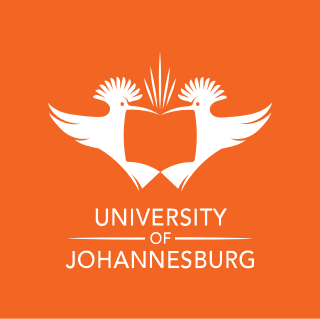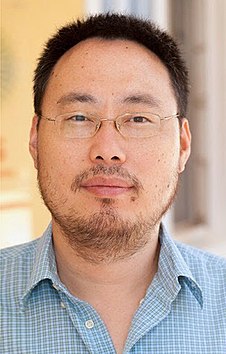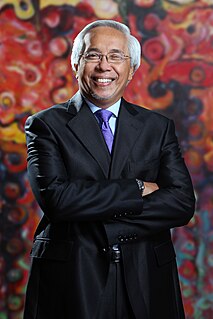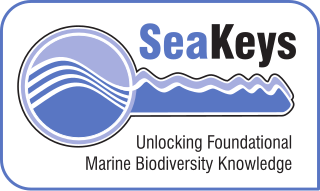
The University of Johannesburg is a public university located in Johannesburg, South Africa. The University of Johannesburg came into existence on 1 January 2005 as the result of a merger between the Rand Afrikaans University (RAU), the Technikon Witwatersrand (TWR) and the Soweto and East Rand campuses of Vista University. Prior to the merger, the Daveyton and Soweto campuses of the former Vista University had been incorporated into RAU. As a result of the merger of Rand Afrikaans University (RAU), it is common for alumni to refer to the university as RAU. The Vice-Chancellor and Principal of UJ is Professor Tshilidzi Marwala. Between 2005 and 2017, UJ's Vice-Chancellor and Principal was Prof Ihron Lester Rensburg.
The Rutherford Appleton Laboratory (RAL) is one of the national scientific research laboratories in the UK operated by the Science and Technology Facilities Council (STFC). It began as the Rutherford High Energy Laboratory, merged with the Atlas Computer Laboratory in 1975 to create the Rutherford Lab; then in 1979 with the Appleton Laboratory to form the current laboratory.
The Human Sciences Research Council (HSRC) of South Africa primarily conducts large-scale, policy-relevant, social-scientific projects for public-sector users, for non governmental organisations and international development agencies in support of development nationally, in the Southern African Development Community (SADC) and in Africa.
Calestous Juma FRS HonFREng was an internationally recognised authority in the application of science and technology to sustainable development worldwide. He was named one of the most influential 100 Africans in 2012, 2013 and 2014 by the New African magazine. He was Professor of the Practice of International Development and Faculty Chair of the Innovation for Economic Development Executive Program at Harvard Kennedy School. Juma was Director of the School's Science, Technology and Globalization Project at Harvard Kennedy School as well as the Agricultural Innovation in Africa Project funded by the Bill and Melinda Gates Foundation. His latest book, Innovation and Its Enemies: Why People Resist New Technologies. was published by Oxford University Press in 2016.
The Department of Science and Technology (DST) is the South African government department responsible for scientific research, including space programmes. The current Minister is Mmamoloko Kubayi-Ngubane.

The Forum for European–Australian Science and Technology Cooperation (FEAST) was a non-government initiative aimed at highlighting and developing collaborative research activities between Europe and Australia. Its offices were located in Canberra, Australia.

The Agency for Science, Technology and Research is a statutory board under the Ministry of Trade and Industry of Singapore.

The Ministry of Science, Technology and Innovation is a ministry of the Government of Malaysia that is responsible for science, technology, innovation, space science, chemistry, nuclear, meteorological, standards, atomic energy, remote sensing, design, technology park, biotechnology, astronautics, cyber security, nanotechnology, venture capital, venture debt, AIDS, research. The current minister is Yeo Bee Yin.

Cang Hui is a mathematical ecologist at Stellenbosch University. His research interests are proposing models and theories for explaining emerging patterns of biodiversity, networks and adaptive traits in ecology and evolution.

The Federal Ministry of Science & Technology is a Nigerian ministry whose mission is to facilitate the development and deployment of science and technology apparatus to enhance the pace of socio-economic development of the country through appropriate technological inputs into productive activities in the nation. It is headed by a Minister appointed by the President, assisted by a Permanent Secretary, who is a career civil servant. President Muhammadu Buhari, GCFR on November 11, 2015 swore in Dr. Christopher Ogbonnaya Onu as the Minister of Science and Technology with Dr.(Mrs) Amina Muhammed Bello Shamaki as the permanent secretary in the ministry.

The Commission on Science and Technology for Sustainable Development in the South (COMSATS) is an inter-governmental organization, having a membership of 25 developing countries and one non-state member from three continents, Latin America, Africa and Asia. Twenty two S&T/R&D institutions of developing countries are affiliated with COMSATS as its Network of International S&T Centers of Excellence for Sustainable Development in the South. The organization aims at sustainable socio-economic uplift of the developing countries through appropriate applications of science and technology using the approach of South-South cooperation.

Tan Sri Zakri bin Abdul Hamid has had a distinguished career in science as a researcher, educator, administrator and diplomat.
Michael John Wingfield is a South African botanist and pathologist. He is director of the Forestry and Agricultural Biotechnology Institute (FABI) at the University of Pretoria and the President of the International Union of Forest Research Organizations (IUFRO).
Professor Rasigan Maharajh, is an activist scholar who is primarily based in South Africa. In 2004, he was the founding Chief Director of the Institute for Economic Research on Innovation (IERI) which is located at the Tshwane University of Technology. From 2014, he has also served as the Node Head of the Department of Science and Technology and National Research Foundation Centre of Excellence in Scientometrics and Science, Technology and Innovation Policy. Since 2015, he holds the title of Professor Extraordinary of the Centre for Research on Evaluation, Science and Technology (CREST) of Stellenbosch University.

Justine Shaw is an Australian Antarctic researcher, best known for her conservation work on subantarctic islands, currently working at the University of Queensland.
European Union's scientific collaboration beyond the bloc describes the European Union's frameworks for bilateral cooperation and specific projects in science and technology with countries and regional blocs situated beyond the European Union.
Science and technology in Uganda examines government efforts to develop a national innovation system and the impact of these policies.
Science and technology in Burkina Faso summarizes developments and trends in this field in Burkina Faso since 2010 and places them in their subregional context.

SeaKeys is a large collaborative marine biodiversity project funded through the Foundational Biodiversity Information Program in South Africa. The purpose of the project is to collect and distribute genetic, species and ecosystem information relating to marine biodiversity in southern Africa, which may be used to support informed decision-making about the marine environment.

















